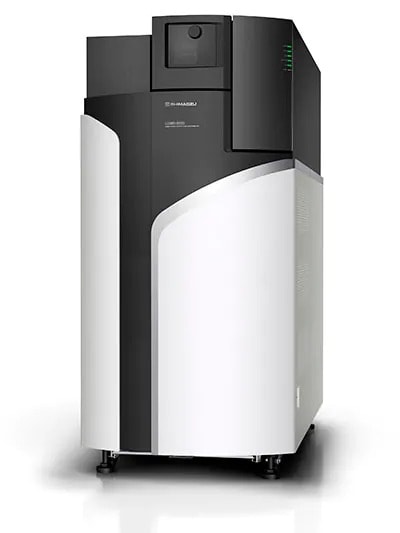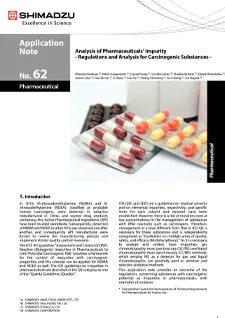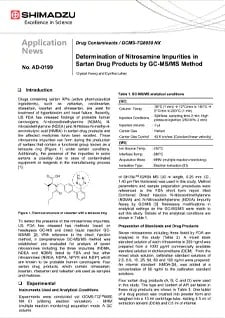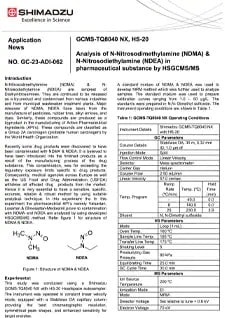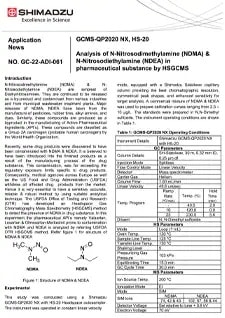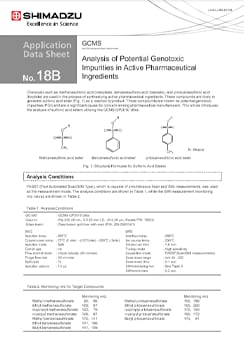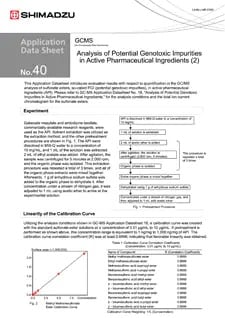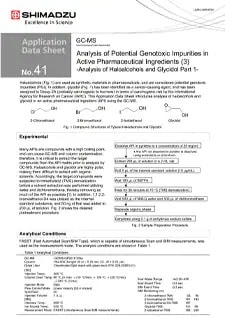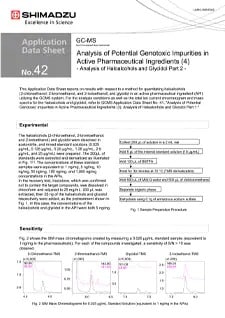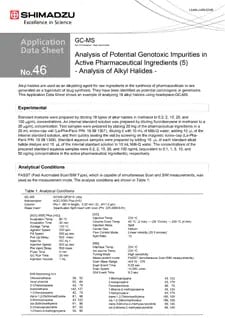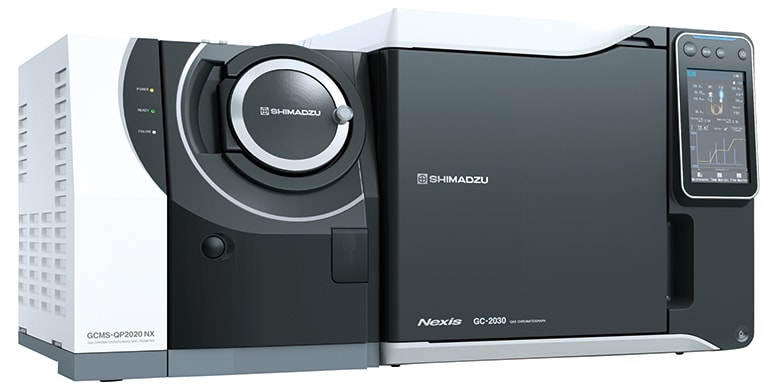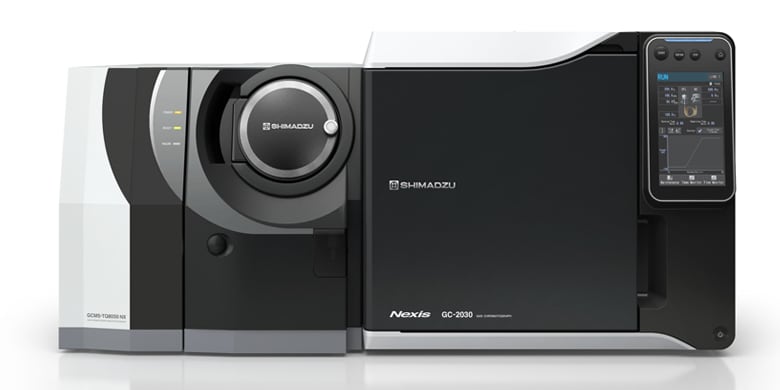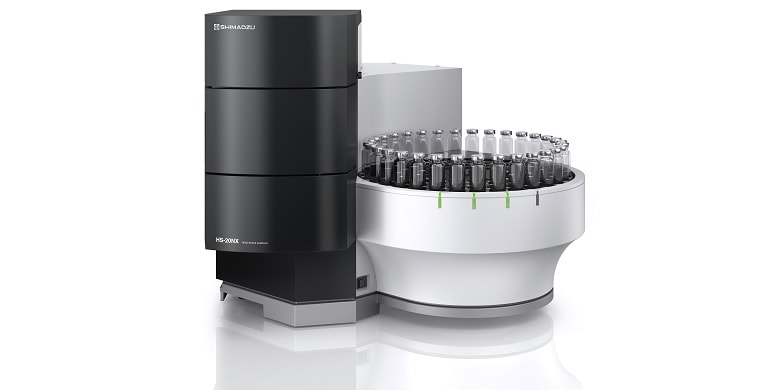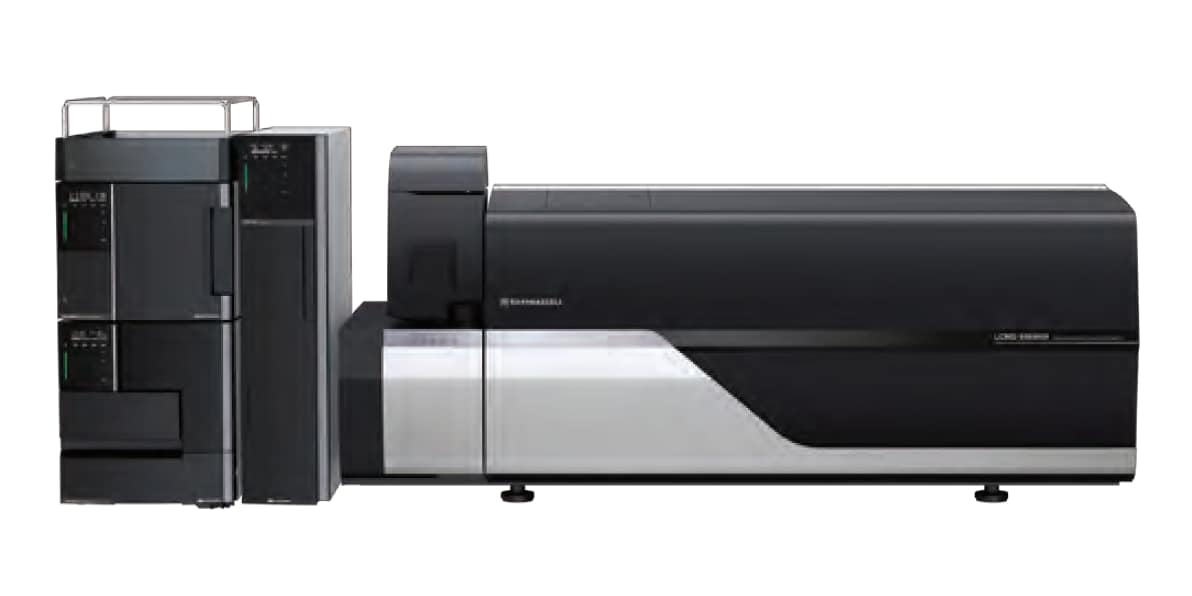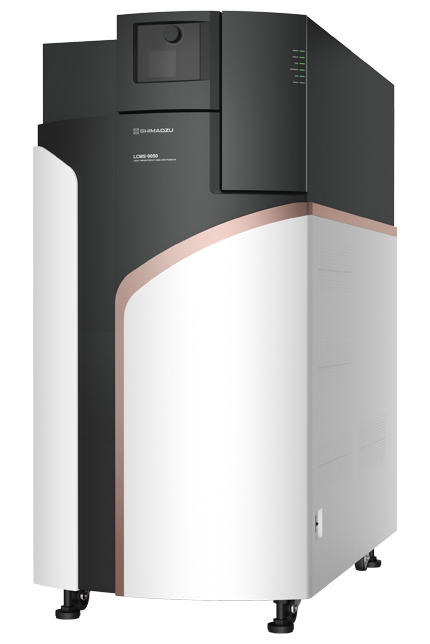Request More Information
Genotoxics / Impurities Analysis
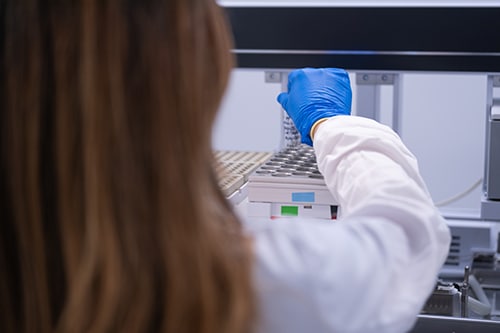
Genotoxic and mutagenic impurities arising from the manufacture or degradation of drug products constitute a health risk even for low level exposures. As such, international pharmacopeia conventions, governmental regulatory bodies, and the International Council for Harmonisation of Technical Requirements for Pharmaceuticals for Human Use (ICH), have provided classification and guidance regarding these compounds since 1990. Because novel pharmaceutical therapeutics may have unforeseen long-term effects, the classification system for potentially genotoxic impurities seeks to proactively identify moieties and structures that may lead to patient harm. This analysis begins early in drug development with qualitative and quantitative structure-activity relationship ((Q)SAR) modeling and may be reassessed if the synthetic route changes from that proposed in the initial (Q)SAR. If an expected or identified impurity is a Class 1, 2, or 3 compound, monitoring of Thresholds of Toxicological Concern (TTC) must be performed.
Since the implementation of the ICH guidelines, a number of genotoxic and mutagenic impurities have been identified and are routinely monitored to ensure public safety. In 2018, nitrosamine impurities were discovered in sartan drugs, a group of angiotensin II receptor blockers, leading to a series of recalls and investigations as to the extent of nitrosamine contaminants in marketed drugs. In December 2020, USP General Chapter <1469> regarding nitrosamines was published, providing guidelines for four procedures used in nitrosamine testing. The FDA provided guidance in August 2023 concerning risk assessment of nitrosamine drug substance related impurities (NDSRI), which require drug manufacturers to complete a determination of the need for ongoing testing of these impurities. In accordance with FDA, ICH, and USP guidelines, Shimadzu provides solutions for gas and liquid chromatography-mass spectrometry, including GC-MS and GC-MS/MS with headspace sampling, high sensitivity LC-MS/MS, and high resolution LC-QTOF to detect nitrosamine and other impurities with confidence.
Featured Solutions
Nitrosamine Solutions
With solutions for headspace GC-MS, direct injection triple quadrupole GC-MS, highly sensitive triple quadrupole LC-MS, and high-resolution LC-MS Q-TOF, Shimadzu can help you run FDA guidance methods to measure and discover nitrosamine contaminants.
Featured Applications
Analysis of Pharmaceuticals’ Impurity - Regulations and Analysis for Carcinogenic Substances
The ICH* M7 guideline “Assessment and Control of DNAReactive (Mutagenic) Impurities in Pharmaceuticals to Limit Potential Carcinogenic Risk” provides a framework for the control of impurities with carcinogenic properties, and this concept can be applied for NDMA and NDEA as well. The ICH guidelines on impurities in pharmaceuticals are described in the Q3 category as one of the “Quality Guidelines (Quality)”. ICH Q3C and Q3D are guidelines on residual solvents and on elemental impurities, respectively, and specific limits for each solvent and element have been established. However, there is a risk of mutation even at low concentrations in the management of substances with DNA reactivity such as carcinogens. Therefore, management at a level different from that in ICH Q3 is necessary for these substances and is independently categorized as “Guidelines on multiple areas of quality, safety, and efficacy (Multidisciplinary).” As it is necessary to analyze and control trace impurities, gas chromatography-mass spectroscopy (GC/MS) and liquid chromatography-mass spectroscopy (LC/MS) methods, which employ MS as a detector for gas and liquid chromatographs, are generally used as sensitive and selective analytical methods. This application note provides an overview of the regulations concerning substances with carcinogenic potential as impurities in pharmaceuticals, with examples of analyses.
Determination of Nitrosamine Impurities in Sartan Drug Products by GC-MS/MS Method
A direct liquid injection gas chromatograph/ tandem mass spectrometry (GC-MS/MS) method that provides sensitive detection and quantitation of seven nitrosamines in sartan drug products was developed with reference to a GC-MS/MS method published by FDA. Out of the targeted nitrosamines, three are listed by FDA as nitrosamine impurities in sartan drug substances and products. They are N-Nitrosodimethylamine (NDMA), NNitrosodiethylamine (NDEA) and N-Nitrosodi-n-butylamine (NDBA). The method presented herein fulfilled FDA requirements of system suitability for linearity, S/N and peak area ratio %RSD (n=6). Calibration curves of all three FDA listed nitrosamines displayed R² ≥ 0.999, the S/N of the 5.0 ng/ml linearity standard were ≥ 10 and peak area ratio %RSD (n=6) at 5.0 ng/ml and 10 ng/ml is between 1.74% and 4.37%.
Analysis of N-Nitrosodimethylamine (NDMA) & N-Nitrosodiethylamine (NDEA) in pharmaceutical substance by HSGCMS/MS
N-Nitrosodimethylamine (NDMA) & NNitrosodiethylamine (NDEA) are the simplest of Dialkylnitrosamines. They are continued to be released as a by-product and contaminant from various industries and from municipal wastewater treatment plants. Major releases of NDMA, NDEA have been from the manufacture of pesticides, rubber tires, alkyl amines, and dyes. These compounds are classified as a Group 2A carcinogen (probable human carcinogen) by the World Health Organization. Recently some drug products were discovered to have been contaminated with NDMA & NDEA. It is believed to have been introduced into the finished products as a result of the manufacturing process of the drug substance. This contamination far exceeded the regulatory exposure limits specific to drug products. Consequently, medical agencies across Europe as well as the US Food and Drug Administration (USFDA) withdrew all affected drug products from the market. Hence it is very essential to have a sensitive, specific, accurate, reliable & robust method by using suitable analytical technique. In this experiment the In this experiment the pharmaceutical API’s namely Valsartan, Losartan & Olmesartan-Medoximil prone to contamination with NDMA and NDEA are analyzed by using a developed HSGCMS/MS method.
Analysis of N-Nitrosodimethylamine (NDMA) & NNitrosodiethylamine (NDEA) in pharmaceutical substance by HSGCMS
N-Nitrosodimethylamine (NDMA) & NNitrosodiethylamine (NDEA) are simplest of Dialkylnitrosamines. These compounds are classified as a Group 2A carcinogen (probable human carcinogen) by the World Health Organization. In this experiment the pharmaceutical API’s namely Valsartan, Losartan & Olmesartan-Medoximil prone to contamination with NDMA and NDEA are analyzed by referring to the USFDA OTR HS-GCMS method.
Analysis of Potential Genotoxic Impurities in Active Pharmaceutical Ingredients
Chemicals such as methanesulfonic acid (mesylate), benzenesulfonic acid (besilate), and p-toluenesulfonic acid (tosylate) are used in the process of synthesizing active pharmaceutical ingredients. These compounds are likely to generate sulfonic acid ester (Fig. 1) as a reaction byproduct. These compounds are known as potential genotoxic impurities (PGI) and are a significant cause for concern among pharmaceutical manufacturers. This article introduces the analysis of sulfonic acid esters utilizing the GCMS-QP2010 Ultra.
Analysis of Potential Genotoxic Impurities in Active Pharmaceutical Ingredients (2)
This Application Datasheet introduces evaluation results with respect to quantification in the GC/MS analysis of sulfonate esters, so-called PGI (potential genotoxic impurities), in active pharmaceutical ingredients (API). Please refer to GC-MS Application Datasheet No. 18, “Analysis of Potential Genotoxic Impurities in Active Pharmaceutical Ingredients,” for the analysis conditions and the total ion current chromatogram for the sulfonate esters.
Analysis of Potential Genotoxic Impurities in Active Pharmaceutical Ingredients (3) - Analysis of Haloalcohols and Glycidol Part 1
Haloalcohols are used as synthetic materials in pharmaceuticals, and are considered potential genotoxic impurities (PGI). In addition, glycidol has been identified as a cancer-causing agent, and has been assigned to Group 2A (probably carcinogenic to humans) in terms of carcinogenic risk by the International Agency for Research on Cancer (IARC). This Application Data Sheet introduces analysis of haloalcohols and glycidol in an active pharmaceutical ingredient (API) using the GC-MS.
Analysis of Potential Genotoxic Impurities in Active Pharmaceutical Ingredients (4) - Analysis of Haloalcohols and Glycidol, Part 2
This Application Data Sheet reports on results with respect to a method for quantitating haloalcohols (2-chloroethanol, 2-bromoethanol, and 2-iodoethanol) and glycidol in an active pharmaceutical ingredient (API) utilizing the GCMS system. For the analysis conditions as well as the total ion current chromatogram and mass spectra for the haloalcohols and glycidol, refer to GCMS Application Data Sheet No. 41, "Analysis of Potential Genotoxic Impurities in Active Pharmaceutical Ingredients (3), Analysis of Haloalcohols and Glycidol Part 1."
Analysis of Potential Genotoxic Impurities in Active Pharmaceutical Ingredients (5) - Analysis of Alkyl Halides
Alkyl halides are used as an alkylating agent for raw ingredients in the synthesis of pharmaceuticals or are generated as a byproduct of drug synthesis. They have been identified as potential carcinogens or genotoxins. This Application Data Sheet shows an example of analyzing 18 alkyl halides using headspace-GC-MS.
News / Events
-
AAPS Pharm Sci 360 2025
November 9-12
Henry B. Gonzalez Convention Center
San Antonio, TX -
Pharma Community Network Event
Shimadzu Scientific Instruments and ZefSci invite you and your analytical teams to a pharma community networking event to celebrate 150 years of science and innovation at The Foundry & Lux in South San Francisco. Our event will be built around innovation, collaboration, and connection.
-
ASMS (American Society for Mass Spectrometry) 2025
June 1-5
Baltimore Convention Center
Baltimore, MD -
Shimadzu Scientific Instruments Opens Boston Location of Its R&D Center Focus will be on promoting customer-oriented development to expand business in the pharmaceutical field
Shimadzu Scientific Instruments, Inc. (SSI, Columbia, Maryland, USA), a Shimadzu Group company, has opened a satellite lab in Boston, Massachusetts to be the base of its collaborative research and development activities on the East Coast. Established to conduct research and development more closely linked to customers, SSI's R&D Center consists of three bases, with the main facilities at its Maryland headquarters, a West Coast location, and this new space in Boston near the city center. The Boston lab was set up by partnering with Labshares, a shared laboratory service provider for life science companies.



